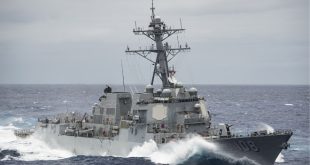Now the mob takes the role of John Wilkes Booth in removing perhaps the greatest of all Lincoln sculptures, the Emancipation Memorial in Lincoln Park, located in northeast Washington, D.C. The preeminent Lincoln scholar of our or any other time, Harry V. Jaffa, said many times that this sculpture, originally referred to as the Freedman’s Memorial, rivaled Daniel French’s Lincoln Memorial creation. The statue was dedicated to honor Lincoln on the 100th anniversary of the Declaration of Independence.
Yet the furious mob blindly objects that the statue shows a kneeling slave before a standing Lincoln. The mob is even more blinkered in its art appreciation than it is in its historical understanding, as I will show in close-up views of the muscular freedman—no longer a slave!—and other details.
According to noted Frederick Douglass biographer David Blight’s account of the statue’s creation, the sculptor, Thomas Ball, had altered his conception from a “‘kneeling slave . . . represented as perfectly passive’ (freedom given), to an ‘emancipated slave [as] agent in his own deliverance’ (freedom seized), . . . the monument as an ‘ideal group . . . [was] converted into the literal truth of history.’”
In other words, the Commission charged with coming up with an appropriate memorial and raising funds from freed slaves—yes, the mob would be desecrating the memories, labor, and donations of enslaved Americans—saw the potential problems in the design and persuaded the sculptor to alter the statue.
The model for the slave, Archer Alexander, was the last slave captured under the Fugitive Slave Act. With his broken shackle, he is rising, as a runner coming off the blocks on the track; this muscular man is ready to spring from the harsh school of slavery into freedom. He should never have been a slave to begin with. Before, he was flat on his face, like dirt; now he is rising as a man. He is an equal; he bows to no one.
In his Promethean gesture Lincoln presents to the freeman as he did to all Americans “a new birth of freedom.” (The hand over the slave imitates the gesture of Prometheus, who, in the Greek myth, gave life to men, who before were merely statues.)
Lincoln’s right hand rests on the Emancipation Proclamation atop a Roman fasces, denoting the common good of the political community. It bears an impression of George Washington.
If we don’t believe our own eyes, we have the testimony of Frederick Douglass, who delivered the dedication address, honoring his friend Abraham Lincoln. The escaped slave Douglass is famous for his criticisms of Lincoln’s policies, including what he then regarded as his slowness to accede to plans for using black soldiers. But he also conceded the correctness of Lincoln’s measured policies. Douglass’s speech is among his best, his most complex, for its unsparing, many-sided views of Lincoln: it smashes all clichés about both men. His audience, we should note, included President Grant.
One example of a clichéd criticism of Lincoln holds him culpable because the Emancipation Proclamation was limited in its scope, freeing only the slaves in Confederate-held territory. It freed no slaves in the Union-controlled slaveholding states such as Kentucky and Maryland. Of course the North could not afford to lose support in these slaveholding, yet pro-Union, States. And Lincoln, as president, did not have the constitutional authority over slavery in states at peace with the Union as his war powers granted him with states at war with the Union. Douglass offers no sententious sop but a lesson in Lincoln’s depth of character, intellect, and incisive judgment—one that we, his audience then and today, desperately need.
The orator forces blacks and whites to resolve to know this man better and to love our country more, and as Lincoln did, in the trials to come. “The trust that Abraham Lincoln had in himself and in the people was surprising and grand, but it was also enlightened and well-founded. He knew the American people better than they knew themselves, and his truth was based upon this knowledge.”
Finally, Douglass concludes, “when the foul reproach of ingratitude is hurled at us [free blacks], and it is attempted to scourge us beyond the range of human brotherhood, we may calmly point to the monument we have this day erected to the memory of Abraham Lincoln.” When the mob destroys or shutters that monument, how will black Americans be a more secure part of the nation to which they as all Americans should have a claim and in which they should have pride? How will any Americans have greater pride, stronger souls?
Everyone is horrified to learn of the mobs that destroyed black achievements in cities throughout the country, including Tulsa, Oklahoma, a century ago. Here is another mob out to destroy an American achievement from over 150 years ago. The real legacy of the Confederacy resides in these mobs, not in people who wave Confederate flags or defend monuments.
President Trump’s executive order protecting monuments on federal land may yet suffice for this statue—but the fact that we have produced senseless mobs willing to tear down our monuments testifies that we, the living, need to do more to honor our nation’s living spirit, not merely take selfies before columns and dead bronze.
 CURE News and Clergy Blog News and Commentary for Christians
CURE News and Clergy Blog News and Commentary for Christians




Great article! If the mob tears this statue down, it will have shown itself for what it is – a mindless gang of terrorists and anarchists who care nothing for justice and equality as they claim, but want only to destroy everything.
That statue should be removed. The symbolism is antiquated. Slaves were never, ever “on their knees.” Place it in National Museum of African-American History and Culture in Washington, D.C.
Say what?! The symbol of a slave breaking his chains is “antiquated”? And, yes, they were on their knees – praying for freedom!
This monument was paid for by freed slaves, and we should honor their memory by keeping it right where it is.
Statue should have had former slave standing shoulder-to-shoulder with Lincoln. That would have better represented equality.